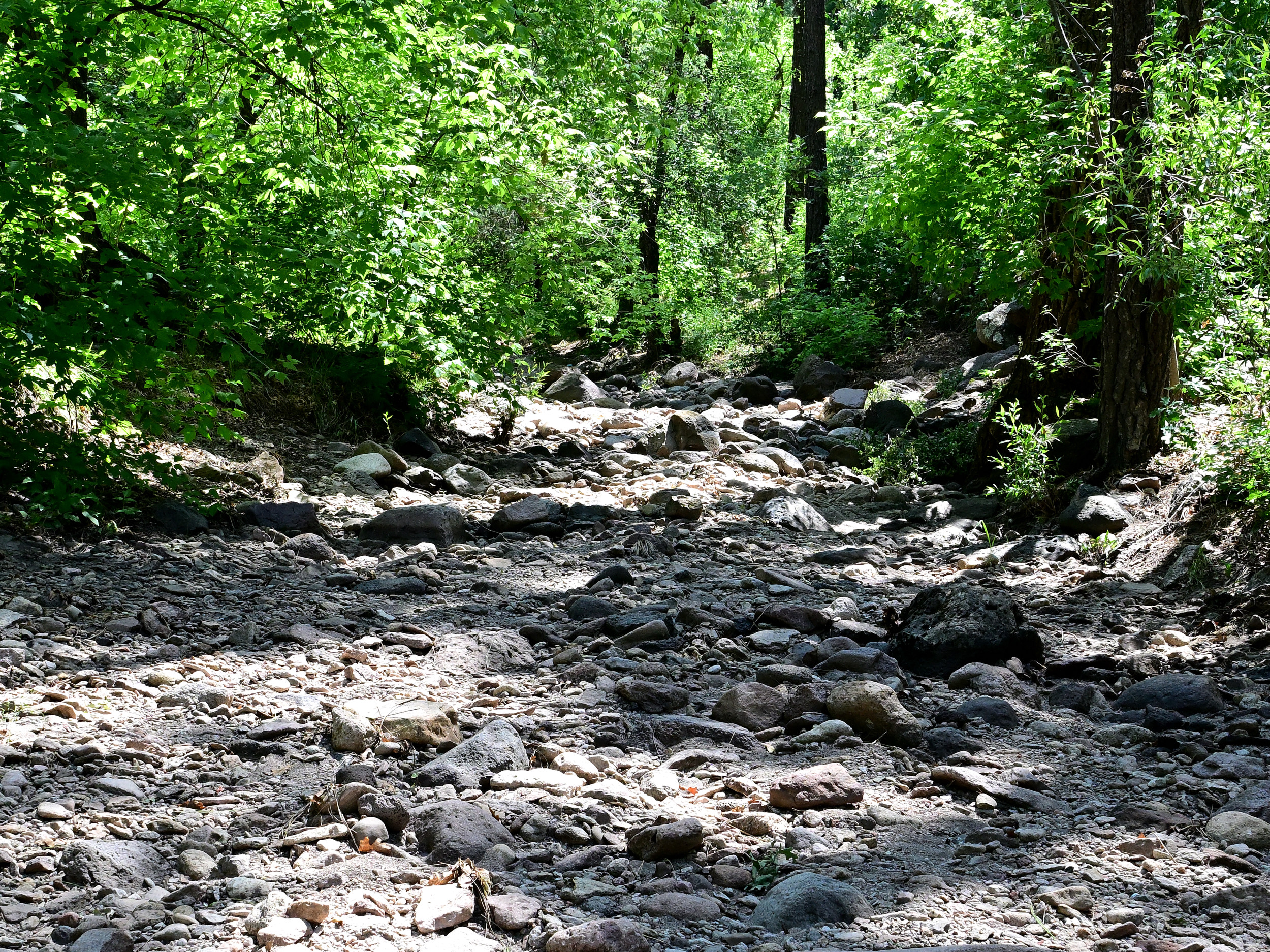For this episode, it’s time to visit the wilderness and see how Mother Nature does water harvesting.
Take, for example, the drainage swale, which sits at the top of a passive water harvesting system.
I liken swales to intermittently flowing rocky stream beds, and the above photo shows an example from southwestern New Mexico. Unless there’s a rainstorm, this stream bed stays dry, just like a passive water harvesting swale.
In passive water harvesting, swales direct water into basins, which we water harvesters like to cover with mulch. In nature, say, in that stream bed, no human water harvesters are needed. The surrounding vegetation will provide the mulch materials, simply by dropping leaves, twigs, and branches.
Human-made water harvesting projects also use berms on the downhill sides of the basins. This aids in water retention, and nature does the same thing. Sometimes the work is done by beavers building dams, and other times, torrential downpours and floods deposit rocks, logs, and other heavy materials, creating temporary or permanent dams.
Another Learning Opportunity!
Check out Martha’s new audiobook and eBook, Water Harvesting 101. It will help you get your water harvesting journey off to a strong start.
